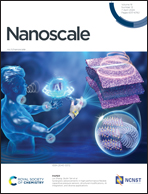Thermally stable Pd/CeO2@SiO2 with a core–shell structure for catalytic lean methane combustion†
Abstract
Noble metal catalysts exhibit high catalytic activity in lean CH4 combustion at low temperatures. However, the high surface energy of noble metal nanoparticles makes them susceptible to deactivation due to migratory-aggregation during the catalytic process. Herein, a core–shell structure with a Pd/CeO2 core and a SiO2 shell (denoted as Pd/CeO2@SiO2) was designed and prepared to enhance the thermal stability for catalytic lean CH4 combustion. A series of characterization methods demonstrated the successful encapsulation of SiO2 and the modified thermal stability. The results of activity tests indicated that Pd/CeO2@SiO2 exhibited the optimal catalytic performance. After seven runs, Pd/CeO2@SiO2 achieved 90% conversion of CH4 at 385 °C compared to Pd/CeO2 at 440 °C. The remarkable catalytic performance was attributed to the synergistic effect of strengthened metal–support interactions and the core–shell structure. On the one hand, the migration and aggregation of Pd nanoparticles were limited due to the protection of the SiO2 shell layer. On the other hand, the SiO2 shell layer further enhanced the interactions between the Pd nanoparticles and CeO2, thus promoting the formation of PdxCe1−xO2−δ solid solutions and active oxygen species, which were beneficial for the improvement of the stability and redox capacity of the catalyst.



 Please wait while we load your content...
Please wait while we load your content...